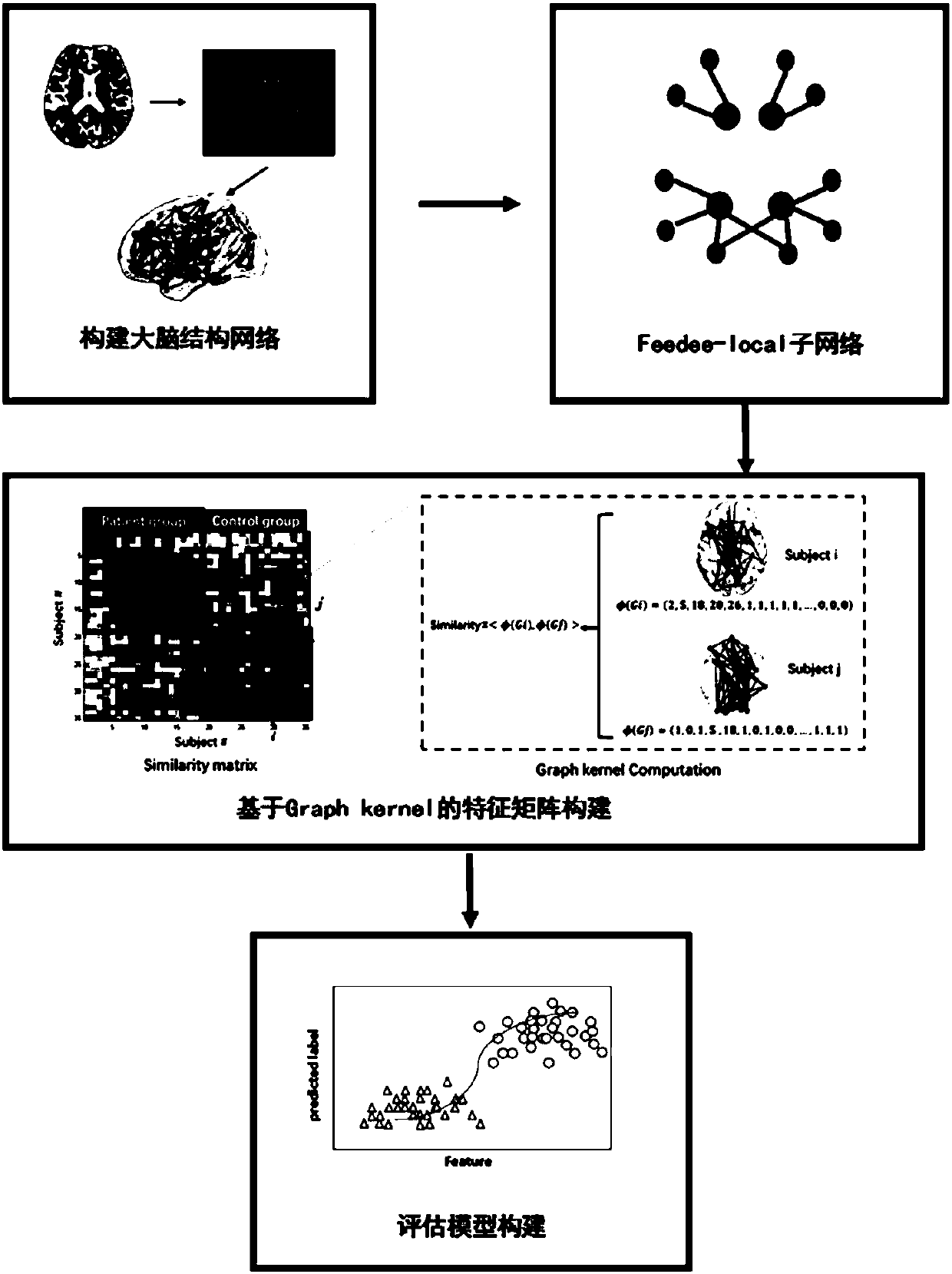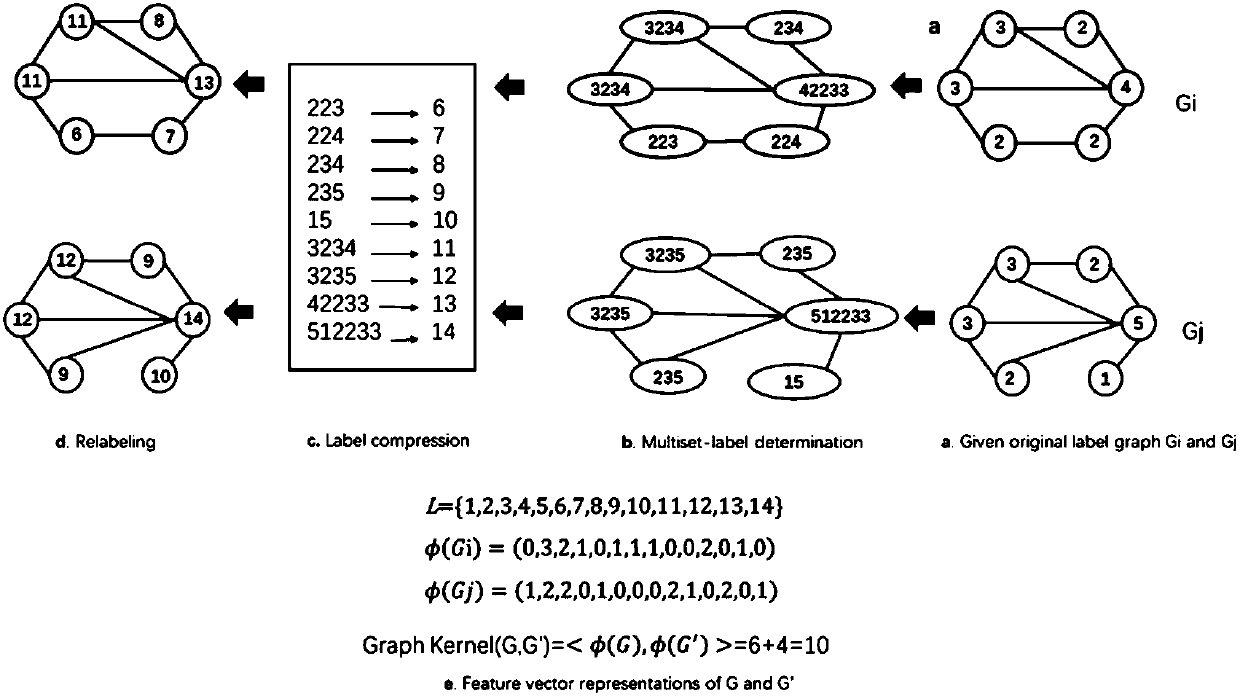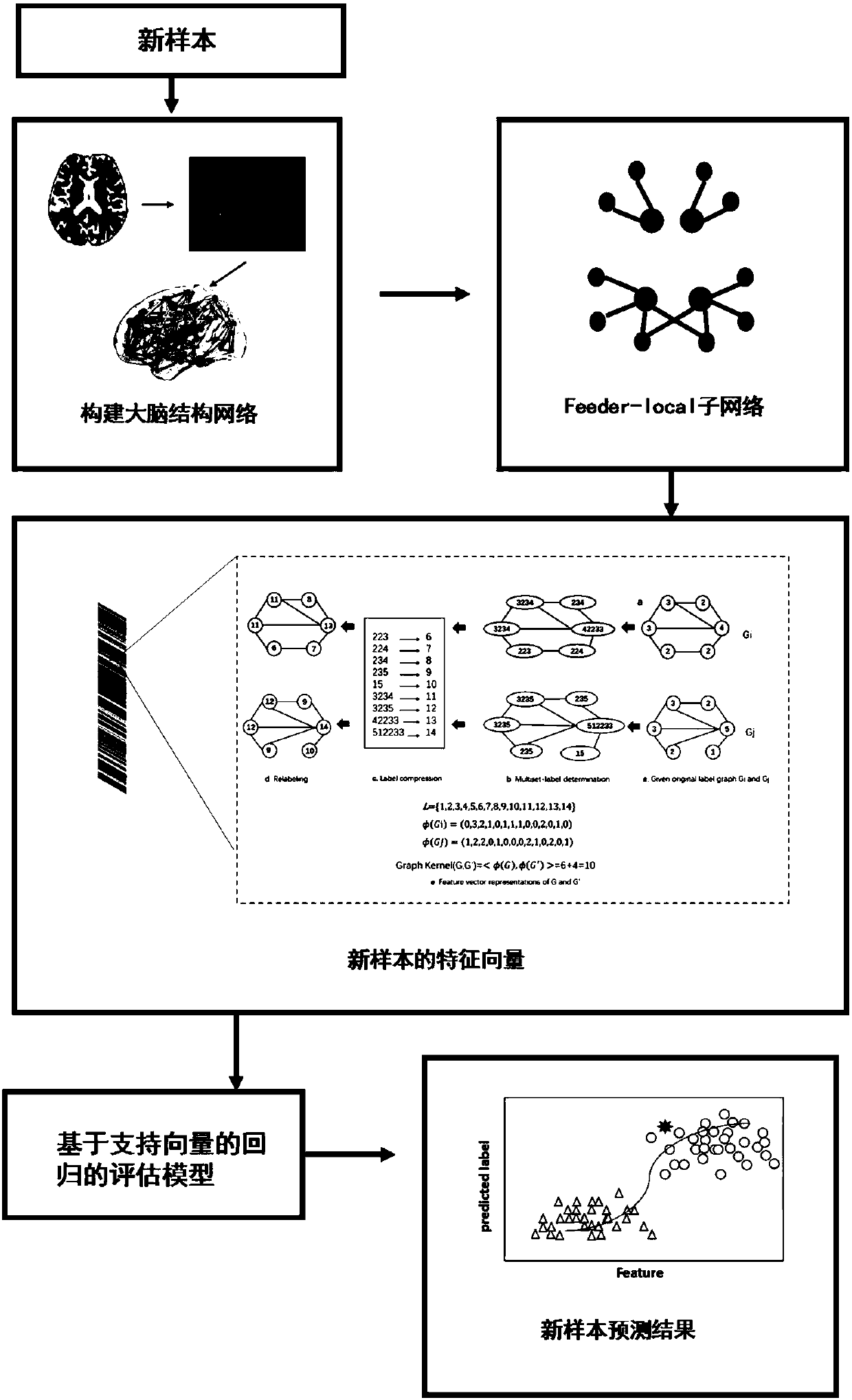Method for evaluating disease recovery of patient suffering from depression based on diffusion tensor imaging
A technology of diffusion tensor imaging and depression, applied in health index calculation, medical automated diagnosis, medical informatics, etc., to avoid errors and avoid over-treatment
- Summary
- Abstract
- Description
- Claims
- Application Information
AI Technical Summary
Problems solved by technology
Method used
Image
Examples
Embodiment Construction
[0042]In this example, 55 untreated depression patients, 55 treated depression patients, and 55 healthy controls matched in gender, age, and education level were selected, and the diffusion tensor imaging signals of the three groups of subjects were collected. , constructed a diffusion tensor imaging-based assessment model for disease recovery in patients with depression, see figure 1 , including the following steps:
[0043] (1) Using the diffusion tensor imaging technology to construct the brain structural network SN (Structural Network) of the modeling sample: for the data of the diffusion tensor imaging of each sample in the modeling sample, use the automatic anatomical labeling template (ALL structural template), Divide the human brain into 90 brain regions, and each brain region is a node of the brain structure network, trace the cellulose between each two brain regions, and divide the anisotropic fraction of the water molecules in the cellulose (FA) is used as the weig...
PUM
 Login to View More
Login to View More Abstract
Description
Claims
Application Information
 Login to View More
Login to View More - R&D
- Intellectual Property
- Life Sciences
- Materials
- Tech Scout
- Unparalleled Data Quality
- Higher Quality Content
- 60% Fewer Hallucinations
Browse by: Latest US Patents, China's latest patents, Technical Efficacy Thesaurus, Application Domain, Technology Topic, Popular Technical Reports.
© 2025 PatSnap. All rights reserved.Legal|Privacy policy|Modern Slavery Act Transparency Statement|Sitemap|About US| Contact US: help@patsnap.com



